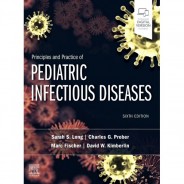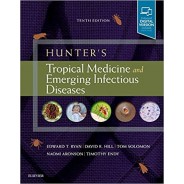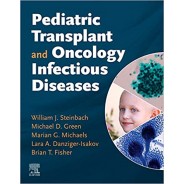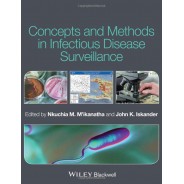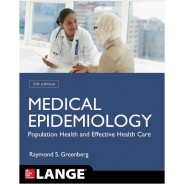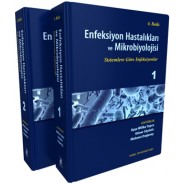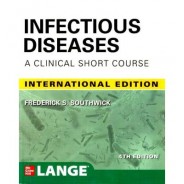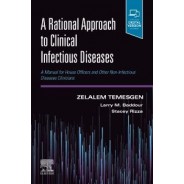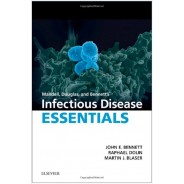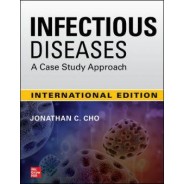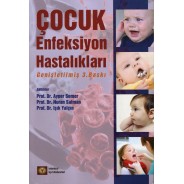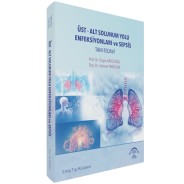Alışveriş sepeti (0) Ürün Ürünler (0)
Sipariş listesinde ürün yok
Kargo Bedava! Kargo
0,00 TL Toplam
Ürün başarıyla alışveriş sepetinize eklendi
Miktarı
Toplam
Sepetinizde 0 ürün bulunmaktadır. Sepetinizde 1 ürün bulunmaktadır.
Toplam ürün:
İnfeksiyon Hastalıkları
- Tıp Kitapları
- Acil Tıp
- Adli Tıp ve kriminoloji
- Aile Hekimliği
- Alerji ve İmmünoloji
- Anatomi
- Anesteziyoloji ve Ağrı
- Biyoloji ve Genetik
- Biyomedikal Mühendisliği
- Biyokimya
- Çocuk Cerrahisi
- Çocuk Sağlığı ve Hastalıkları
- Çocuk ve Ergen Psikiyatrisi
- Dahiliye
- Dermatoloji
- Endokrinoloji
- Farmakoloji
- Fiziksel Tıp ve Rehabilitasyon
- Fizyoterapi, Rehabilitasyon ve Spor Hekimliği
- Fizyoloji
- Gastroenteroloji
- Geleneksel ve Tamamlayıcı Tıp
- Genel Cerrahi
- Geriatri
- Göğüs Hastalıkları
- Kalp Damar Cerrahisi
- Göz Hastalıkları
- Halk Sağlığı
- Hematoloji
- Histoloji ve Embriyoloji
- İnfeksiyon Hastalıkları
- Kadın Hastalıkları ve Doğum
- Kardiyoloji
- Kulak Burun Boğaz Hastalıkları
- Mikrobiyoloji immunoloji
- Nöroşirürji
- Nefroloji
- Nöroloji
- Nükleer Tıp
- Onkoloji
- Ortopedi ve Travmatoloji
- Patoloji
- Plastik Cerrahi
- Sağlıklı Yaşıyoruz
- Spor Hekimliği
- Psikiyatri
- Radyasyon Onkoloji
- Radyoloji
- Romatoloji
- Tıp Tarihi ve Tıp Etiği
- Tıbbı İstatistik Araştırma
- Tıp ve Sağlık Hukuku
- Tıbbi Laboratuvar Deney Bilimi
- USMLE & Board Review
- Üroloji
- Yoğun Bakım
- Göğüs Cerrahisi
- Uyku Tıbbı
- Diş Hekimliği Kitapları
- Eczacılık Kitapları
- Beslenme ve Diyet Kitapları
- Veteriner Hekimlik
- DUS Kitapları
- DUS Akademi Konu Kitapları Serisi
- DUS için Açıklamalı Deneme Sınavları Serisi
- DUS Spot Bilgiler Serisi
- Miadent Konu Kitapları Serisi
- Miadent Soru Kitapları Serisi
- DUS Çıkmış Soru Kitapları
- DUSDATA Şampiyonların Notu
- DUS Review Serisi
- DUSDATAMAX Soru Kitapları Serisi
- DUS Akademi Soru Kitapları Serisi
- Diğer Kitapları Serisi
- TUS Kitapları
- Çıkmış TUS Soru Kitapları
- 41 Deneme Serisi
- MEDOTOMY Serisi
- Tusmer
- Klinisyen Konu Kitapları Serisi
- Optimum Serisi
- Premium Serisi
- PRETUS Deneme Sınavları Serisi
- ProspekTUS Serisi
- Klinisyen Soru Kitapları Serisi
- Tusdata Ders Notları
- Tıbbi İngilizce
- Vaka Soruları Serisi
- Tüm Tus Soruları
- Hızlı Tekrar Serisi
- UTS Serisi
- KAMP ÖZEL NOTLARI
- Meditus Serisi
- YDUS Kitapları
- Hemşirelik ve Ebelik kitapları
- HEMŞİRELİK / halk sağlığı
- HEMŞİRELİK / Hemşirelik Esasları
- HEMŞİRELİK / İç Hastalıkları
- HEMŞİRELİK / Cerrahi Hastalıkları
- HEMŞİRELİK / Kadın hastalıkları ve doğum Ebelik
- HEMŞİRELİK / Ruh Sağlığı ve Hastalıkları
- HEMŞİRELİK / Hemşirelikte Eğitim
- HEMŞİRELİK / Çocuk Sağlığı ve Hastalıkları
- HEMŞİRELİK / Acil tıp hemşireliği
- SAĞLIK BİLİMLERİ
- Çocuk Gelişimi
- Sağlık Yöneticiliği
- Optisyenlik
- Odyoloji
- Saç Bakımı ve Güzellik Hizmetleri
- Anestezi Teknikerliği
- Tıbbi Dökümantasyon ve Sekreterlik
- Tıbbi Laboratuvar Teknisyenliği
- İş Sağlığı ve Güvenliği
- Ergoterapi
- Ağız ve Diş Sağlığı Teknisyenliği
- Dil ve Konuşma Terapisi
- İlk ve Acil Yardım Teknikeri (Paramedik)
- Radyoloji Teknisyenliği
- EĞİTİM BİLİMLERİ
- Değerler Eğitimi
- Eğitim Programları ve Öğretim
- Eğitim Psikolojisi
- Eğitim Yönetimi ve Denetimi
- Eğitimde Drama
- Eğitim Temelleri
- Eğitim Teknolojileri
- Okul Öncesi Eğitim
- Ortaokul Öğretmenliği
- Öğretmenlik Eğitimi Bölümleri
- Ölçme ve Değerlendirme
- Özel Eğitim
- Psikolojik Danışmanlık ve Rehberlik
- Sınıf Öğretmenliği
- Sınıf Yönetimi Etkili Öğretim
- Yabancı Dil Eğitimi
- İLETİŞİM
- İŞLETME
- İKTİSAT / EKONOMİ / MALİYE
- MİMARLIK - SANAT
- BİLİM TEKNİK
- MÜHENDİSLİK - TEKNİK
- FEN BİLİMLERİ
- ÇOCUK VE GENÇLİK KİTAPLARI
- BEŞERİ/SOSYAL BİLİMLER
- ÇEVRE ve YER BİLİMLERİ
- GIDA TARIM ve HAYVANCILIK
- BİYOMEDİKAL MÜHENDİSLİĞİ
- SEYAHAT TURİZM
- SOSYAL ÇALIŞMALAR
- SPOR BİLİMLERİ
- YÖNETİM - SİYASET - ULUSLARARASI İLİŞKİLER
- SINAVLAR HAZIRLIK
- ÖNERİLEN ÜRÜNLER
- Çok Satan Romanlar
- E-Kitaplar
- AYBAK
- Kırtasiye
- Yabancı Dil Eğitimi
 Daha büyük görüntüle
Daha büyük görüntüle Mandell, Douglas, and Bennett's Principles and Practice of Infectious Diseases, 10th Edition 2-Volume Set
9780323934992
BU KİTAP İÇİN ÖN SİPARİŞ ALINMAKTADIR. TESLİM SÜRESİ 6 - 8 HAFTADIR. BİLGİ ALMAK İÇİN MAĞAZAMIZI ARAYINIZ
23 800,88 TL
19 040,70 TL
-20%
KDV Hariç: 19 040,70 TL
- Yorum Yaz
| Description: Offering more in-depth coverage of epidemiology, etiology, pathology, microbiology, immunology, and treatment of infectious agents than any other infectious disease resource, Mandell, Douglas, and Bennett's Principles and Practice of Infectious Diseases, 10th Edition, remains your #1 choice for authoritative, comprehensive information in this challenging field. Meticulously updated by a new editorial team of Drs. Martin J. Blaser, Jeffrey I. Cohen, and Steven M. Holland, this two-volume masterwork brings together the knowledge and expertise of more than 650 contributing authors who are outstanding scholars and experts in their fields. For ID specialists and general practitioners alike, PPID provides a balanced, detailed perspective for any patient you encounter with a complex or difficult-to-treat infectious disease. | ||
| Features: | ||
| ||
| New To This Edition: | ||
| ||
| Table Of Contents: | ||
| PART I: BASIC PRINCIPLES IN THE DIAGNOSIS AND MANAGEMENT OF INFECTIOUS DISEASES Section A: Microbial Pathogens 1. A Molecular Perspective of Microbial Pathogenicity 2. The Human Microbiome 3. Prebiotics, Probiotics, and Synbiotics Section B: Host Defense Mechanisms 4. Innate (General or Nonspecific) Host Defense Mechanisms 5. Adaptive Immunity: Antibodies and Immunodefiencies 6. Cell-Mediated Defense Against Infection 7. Mucosal Immunity 8. Granulocytic Phagocytes 9. Complement and Deficiencies 10. Human Genetics and Infection 11. Nutrition, Immunity, and Infection 12. Evaluation of the Patient with Suspected Immunodeficiency Section C: Epidemiology of Infectious Disease 13. Principles of Applied Epidemiology for the Practice of Infectious Diseases 14. Emerging and Reemerging Infectious Disease Threats 15. Bioterrorism: An Overview Section D: Clinical Microbiology 16. The Clinician and the Microbiology Laboratory: Test Ordering, Specimen Collection, and Result Interpretation Section E: Antiinfective Therapy 17. Principles of Anti-Infective Therapy 18. Molecular Mechanisms of Antibiotic Resistance in Bacteria 19. Pharmacokinetics and Pharmacodynamics of Anti-Infective Agents 20. Penicillins and ß-Lactamase Inhibitors 21. Cephalosporins and Cephalosporin/ß-Lactamase Inhibitor Combinations 22. Carbapenems, Carbapenem/ß-Lactamase Inhibitor Combinations, and Aztreonam 23. Antibiotic Allergy 24. Aminoglycosides 25. Tetracyclines, Tetracycline Derivatives, and Chloramphenicol 26. Rifamycins 27. Metronidazole 28. Macrolides and Clindamycin 29. Glycopeptides (Vancomycin and Teicoplanin) and Lipoglycopeptides (Telavancin, Oritavancin, and Dalbavancin) 30. Streptogramins (Quinupristin-Dalfopristin) and Lipopeptides (Daptomycin) 31. Polymyxins (Polymyxin B and Colistin) 32. Linezolid,Tedizolid, and Other Oxazolidinones 33. Sulfonamides and Trimethoprim; Trimethoprim-Sulfamethoxazole 34. Quinolones 35. Antibiotics in Advanced Development and Other Agents 36. Urinary Tract Agents: Nitrofurantoin, Fosfomycin and Methenamine 37. Topical Antibacterials 38. Antimycobacterial Agents 39. Bacteriophage Therapy, Endolysin Therapy and Antimicrobial Peptide Therapy 40. Antifungal Agents: Polyene Antifungals 41. Antifungal Drugs: Azole 42. Antifungal Drugs: Echinocandins and Other Beta-D-glucan Inhibitors 43. Antifungal Drugs: Flucytosine 44. Antimalarial Drugs 45. Drugs for Protozoal Infections Other Than Malaria 46. Drugs for Helminths 47. Antiviral Agents: General Principles 48. Antiviral Drugs for Influenza and Other Respiratory Virus Infections Except for SARS-CoV-2 49. Antivirals Against Herpesviruses 50. Antiviral Drugs Against Hepatitis Viruses 51. Miscellaneous Antivirals Agents (Interferons, Tecovirimat, Imiquimod, Pocapavir) 52. Immunomodulators 53. Hyperbaric Oxygen 54. Antimicrobial Stewardship 55. Designing and Interpreting Clinical Studies in Infectious Diseases 56. Outpatient Parenteral Antimicrobial Therapy PART II: MAJOR CLINICAL SYNDROMES Section A: Fever 57. Temperature Regulation and the Pathogenesis of Fever 58. Fever of Unknown Origin 59. The Acutely Ill Patient with Fever and Rash Section B: Upper Respiratory Tract Infections 60. The Common Cold 61. Pharyngitis 62. Acute Laryngitis 63. Otitis Externa, Otitis Media, and Mastoiditis 64. Sinusitis 65. Epiglottitis 66. Infections of the Oral Cavity, Neck, and Head Section C: Pleuropulmonary and Bronchial Infections 67. Acute Bronchitis 68. Acute Exacerbations of Chronic Obstructive Pulmonary Disease 69. Acute Pneumonia 70. Pleural Effusion and Empyema 71. Bacterial Lung Abscess 72. Chronic Pneumonia 73. Cystic Fibrosis Section D: Urinary Tract Infections 74. Urinary Tract Infections Section E: Sepsis 75. Sepsis and Septic Shock Section F: Intraabdominal Infections 76. Peritonitis and Intraperitoneal Abscesses 77. Infections of the Liver and Biliary System (Liver Abscess, Cholangitis, Cholecystitis) 78. Pancreatic Infection 79. Splenic Abscess 80. Appendicitis 81. Diverticulitis and Neutropenic Enterocolitis Section G: Cardiovascular Infections 82. Endocarditis and Intravascular Infections 83. Prosthetic Valve Endocarditis 84. Infections of Nonvalvular Cardiovascular Devices 85. Prophylaxis of Infective Endocarditis 86. Myocarditis and Pericarditis 87. Mediastinitis Section H: Central Nervous System Infections 88. Approach to the Patient with Central Nervous System Infection 89. Acute Meningitis 90. Chronic Meningitis 91. Encephalitis 92. Brain Abscess 93. Subdural Empyema, Epidural Abscess, and Suppurative Intracranial Thrombophlebitis 94. Cerebrospinal Fluid Shunt and Drain Infections Section I: Skin and Soft Tissue Infections 95. Cellulitis, Necrotizing Fasciitis, and Subcutaneous Tissue Infections 96. Myositis and Myonecrosis 97. Lymphadenitis and Lymphangitis Section J: Gastrointestinal Infections and Food Poisoning 98. Syndromes of Enteric Infection 99. Esophagitis 100. Diarrhea with Little or No Fever 101. Acute Dysentery Syndromes (Diarrhea with Fever) 102. Typhoid Fever, Paratyphoid Fever, and Typhoidal Fevers 103. Foodborne Disease (Food Poisoning) 104. Tropical Sprue and Environmental Enteric Dysfunction Section K: Bone and Joint Infections 105. Infectious Arthritis of Native Joints 106. Osteomyelitis 107. Orthopaedic Implant-Associated Infections Section L: Diseases of The Reproductive Organs and Sexually Transmitted Diseases 108. Anogenital Skin and Mucous Membrane Lesions 109. Urethritis 110. Vulvovaginitis and Cervicitis 111. Infections of the Female Pelvis 112. Prostatitis, Epididymitis, and orchitis Section M: Eye Infections 113. Introduction to Eye Infections 114. Microbial Conjunctivitis 115. Microbial Keratitis 116. Endophthalmitis 117. Infectious Causes of Uveitis 118. Periocular Infections Section N: Hepatitis 119. Viral Hepatitis Section O: Acquired Immunodeficiency Syndrome 120. Human Immunodeficiency Viruses 121. Global Perspectives on Human Immunodeficiency Virus Infection and Acquired Immunodeficiency Syndrome 122. Epidemiology and Prevention of AIDS and HIV Infection, Including Preexposure Prophylaxis and HIV Vaccine Development 123. Diagnosis of Human Immunodeficiency Virus Infection 124. The Immunology of HIV-1 Infection, Mechanisms of Viral Persistence, and Prospects for Cure 125. General Clinical Manifestations of Human Immunodeficiency Virus Infection (Including Acute Retroviral Syndrome and Oral, Cutaneous, Renal, Ocular, Metabolic, and Cardiac Diseases) 126. Pulmonary Manifestations of Human Immunodeficiency Virus Infection 127. Gastrointestinal Hepatobiliary and Pancreatic Manifestations of Human Immunodeficiency Virus Infection 128. Neurologic Diseases Caused By Human Immunodeficiency Virus Type 1 and Opportunistic Infections 129. Pediatric Human Immunodeficiency Virus Infection 130. Antiretroviral Therapy for Human Immunodeficiency Virus Infection 131. Management of Opportunistic Infections Associated with Human Immunodeficiency Virus Infection Section P: COVID-19 132. Severe Acute Respiratory Syndrome Coronavirus 2 (SARS-CoV-2) Virology 133. Global perspective and Epidemiology of COVID-19 134. Immunology and Diagnosis of SARS-CoV-2 and COVID-19 135. Clinical Manifestations of COVID-19 in Adults and Children 136. Treatment and Prevention of SARS-CoV-2 (COVID-19) Section Q: Miscellaneous Syndromes 137. Myalgic Encephalomyelitis/Chronic Fatigue Syndrome PART III: INFECTIOUS DISEASES AND THEIR ETIOLOGIC AGENTS Section A: Viral Diseases 138. Biology of Viruses and Viral Diseases 139. Orthopoxviruses: Vaccinia (Smallpox Vaccine), Variola (Smallpox), Mpox, and Cowpox 140. Other Poxviruses That Infect Humans: (Including Orf Virus) Molluscum Contagiosum, and Yatapoxviruses 141. Introduction to Herpesviridae 142. Herpes Simplex Virus 143. Chickenpox and Herpes Zoster (Varicella-Zoster Virus) 144. Cytomegalovirus 145. Epstein-Barr Virus (Infectious Mononucleosis, Epstein-Barr Virus–Associated Malignant Diseases, and Other Diseases) 146. Human Herpesvirus Types 6 and 7 (Exanthem Subitum) 147. Kaposi’s Sarcoma–Associated Herpesvirus (Human Herpesvirus Type 8) 148. Herpes B Virus 149. Adenoviruses 150. Papillomaviruses 151. JC, BK, and Other Polyomaviruses: Progressive Multifocal Leukoencephalopathy, BK Nephropathy, and Merkel Cell Carcinoma 152. Hepatitis B Virus 153. Hepatitis D Virus 154. Human Parvoviruses, Including Parvovirus B19, Human Bocaviruses, and Adeno-Associated Viruses (AAVs) 155. Orthoreoviruses and Orbiviruses 156. Coltiviruses (Colorado Tick Fever Virus) and Seadornaviruses 157. Rotaviruses 158. Alphaviruses 159. Rubella Virus (German Measles) 160. Flaviviruses (Dengue, Yellow Fever, Japanese Encephalitis, West Nile Encephalitis, Usutu Encephalitis, St. Louis Encephalitis, Tick-Borne Encephalitis, Powassan Encephalitis, Kyasanur Forest Disease, Alkhurma Hemorrhagic Fever, Zika) 161. Hepatitis C 162. Coronaviruses, Including Severe Acute Respiratory Syndrome (SARS) and Middle East Respiratory Syndrome (MERS) 163. Parainfluenza Viruses 164. Mumps Virus 165. Respiratory Syncytial Virus 166. Human Metapneumovirus 167. Measles Virus (Rubeola) 168. Zoonotic Paramyxoviruses: Nipah, Hendra, and Menangle Viruses 169. Vesicular Stomatitis Virus and Related Vesiculoviruses (Chandipura Virus) 170. Rabies (Rhabdoviruses) 171. Marburg and Ebola Virus Hemorrhagic Fevers 172. Influenza Viruses, Including Avian Influenza and Swine Influenza 173. Bunyavirus Infections: Hantavirus Syndromes, La Crosse encephalitis, Rift Valley Fever, Crimean-Congo Hemorrhagic Fever, and Others 174. Lymphocytic Choriomeningitis Virus, Lassa Virus, Lujo Virus, and the South American Hemorrhagic Fever Viruses (Arenaviruses) 175. Human T-Lymphotropic Virus 176. Introduction to the Human Enteroviruses and Parechoviruses 177. Poliovirus 178. Coxsackieviruses, Echoviruses and Numbered Enteroviruses (EVD-68, EVD-70, EV-A71) ) 179. The Human Parechoviruses 180. Hepatitis A Virus 181. Rhinovirus 182. Noroviruses and Sapoviruses (Caliciviruses) 183. Astroviruses and Picobirnaviruses 184. Hepatitis E Virus Section B: Prion Diseases 185. Prions and Prion Diseases of the Central Nervous System (Transmissible Neurodegenerative Diseases) Section C: Chlamydial Diseases 186. Chlamydia Trachomatis (Urogenital Infections and Trachoma) 187. Psittacosis (Due to Chlamydia psittaci) 188. Chlamydia Pneumoniae Section D: Mycoplasma Diseases 189. Mycoplasmoides (Mycoplasma) pneumoniae 190. Genital Mycoplasmas: Mycoplasma Genitalium, Mycoplasma Hominis, Ureaplasma Species Section E: Rickettsioses, Ehrlichioses, and Anaplasmoses 191. Introduction to Rickettsioses, Ehrlichioses, and Anaplasmosis 192. Rickettsia Rickettsii and Other Spotted Fever Group Rickettsiae (Rocky Mountain Spotted Fever and Other Spotted Fevers) 193. Coxiella Burnetii (Q Fever) 194. Rickettsia Prowazekii (Epidemic or Louse-Borne Typhus) 195. Rickettsia Typhi (Murine Typhus) 196. Orientia Tsutsugamushi (Scrub Typhus) 197. Ehrlichia chaffeensis, Anaplasma phagocytophilum, and Other Anaplasmataceae Section F: Bacterial Diseases 198. Introduction to Bacteria and Bacterial Diseases Sub-Section I. Infections due to Gram-Positive Bacteria 199. Staphylococcus Aureus 200. Staphylococcus Epidermidis and Other Coagulase-Negative Staphylococci 201. Classification of Streptococci 202. Streptococcus Pyogenes (Group A streptococcus) 203. Nonsuppurative Poststreptococcal Sequelae: Rheumatic Fever and Glomerulonephritis 204. Streptococcus Pneumoniae 205. Enterococcus Species, Streptococcus Gallolyticus Group and Leuconostoc Species 206. Streptococcus Agalactiae (Group B Streptococcus) 207. Viridans Streptococci, Nutritionally Variant Streptococci, and Groups C and G Streptococci 208. Streptococcus Anginosus Group 209. Corynebacterium Diphtheriae (Diphtheria) 210. Other Coryneform Bacteria and Rhodococci 211. Listeria Monocytogenes 212. Bacillus Anthracis (Anthrax) 213. Bacillus Species and Related Genera Other Than Bacillus Anthracis 214. Erysipelothrix Rhusiopathiae 215. Whipple Disease Sub-Section II. Infections due to Gram-Negative Bacteria 216. Neisseria Meningitidis 217. Neisseria Gonorrhoeae (Gonorrhea) 218. Moraxella Catarrhalis, Kingella, and Other Gram-Negative Cocci 219. Vibrio Cholerae 220. Other Pathogenic Vibrios 221. Campylobacter Jejuni and Related Species 222. Helicobacter Pylori and Other Gastric Helicobacter Species 223. Enterobacterales (Enterobacteriaceae) 224. P. Aeruginosa and Other Pseudomonas Species 225. Stenotrophomonas Maltophilia and Burkholderia Cepacia Complex 226. Burkholderia Pseudomallei and Burkholderia Mallei: Melioidosis and Glanders 227. Acinetobacter Species 228. Salmonella Species 229. Bacillary Dysentery: Shigella and Enteroinvasive Escherichia coli 230. Haemophilus Species, Including H. Influenzae and H. ducreyi 231. Brucellosis (Brucella Species) 232. Francisella Tularensis (Tularemia) 233. Pasteurella Species 234. Plague (Yersinis Pestis) 235. Yersinia Enterocolitica and Yersinia Pseudotuberculosis 236. Bordetella Pertussis 237. Rat-Bite Fever: Streptobacillus Moniliformis and Spirillum Minus 238. Legionnaires’ Disease and Pontiac Fever 239. Capnocytophaga Species 240. Bartonella, Including Cat-Scratch Disease 241. Klebsiella Granulomatis (Donovanosis, Granuloma Inguinale) 242. Other Gram-Negative and Gram-Variable Bacilli Sub-Section III. Infections due to Spirochetal Bacteria 243. Syphilis (Treponema Pallidum) 244. Endemic Treponematoses 245. Leptospira Species (Leptospirosis) 246. Relapsing Fevers Due to Borrelia Species 247. Lyme Disease (Lyme Borreliosis) Due to Borrelia Burgdorferi Sub-Section IV. Infections due to Anaerobic Bacteria 248. Anaerobic Infections: General Concepts 249. Clostridioides (Clostridium) difficile Infection 250. Tetanus (Clostridium Tetani) 251. Botulism (Clostridium Botulinum) 252. Diseases Caused by Clostridium 253. Bacteroides, Prevotella, Porphyromonas, and Fusobacterium Species (And Other Medically Important Anaerobic Gram-Negative Bacilli) 254. Anaerobic Cocci and Anaerobic Gram-Positive Nonsporulating Bacilli Sub-Section V. Infections due to Acid-Fast Organisms 255. Mycobacterium Tuberculosis 256. Leprosy (Mycobacterium Leprae) 257. Mycobacterium Avium Complex 258. Infections Caused by Nontuberculous Mycobacteria Other Than Mycobacterium Avium Complex 259. Nocardia Species 260. Agents of Actinomycosis Section G: Mycoses 261. Introduction to Mycoses 262. Candida Species 263. Aspergillus Species 264. Agents of Mucormycosis and Entomophthoramycosis 265. Sporothrix Schenckii 266. Chromoblastomycosis 267. Mycetoma 268. Cryptococcosis (Cryptococcus Neoformans and Cryptococcus Gattii) 269. Histoplasma Capsulatum (Histoplasmosis) 270. Blastomycosis 271. Coccidioidomycosis (Coccidioides Species) 272. Dermatophytosis (Ringworm) and Other Superficial Mycoses 273. Paracoccidioidomycosis 274. Uncommon Fungi and Related Species 275. Pneumocystis Species 276. Microsporidiosis Section H: Protozoal Diseases 277. Introduction to Protozoal Diseases 278. Entamoeba Species, Including Amebic Colitis and Liver Abscess 279. Free-Living Amebae 280. Malaria (Plasmodium Species) 281. Leishmania Species: Visceral, Cutaneous, and Mucosal 282. Trypanosoma Species (American Trypanosomiasis, Chagas Disease): Biology of Trypanosomes 283. Agents of African Trypanosomiasis (Sleeping Sickness) 284. Toxoplasma Gondii 285. Giardia Lamblia 286. Trichomonas Vaginalis 287. Babesia Species 288. Cryptosporidiosis (Cryptosporidium Species) 289. Cyclospora Cayetanensis, Isospora Belli, Sarcocystis Species, Balantidium Coli, and Blastocystis Species Section I: Diseases Due to Toxic Algae 290. Human Illness Associated With Cyanobacteria and Harmful Algal Blooms, Including Fish and Shellfish Poisoning Syndromes Section J: Diseases Due to Helminths 291. Introduction to Helminth Infections 292. Intestinal Nematodes (Roundworms) 293. Tissue Nematodes, Including Trichinellosis, Dracunculiasis, and the Filariases 294. Trematodes (Schistosomes and Liver, Intestinal and Lung Flukes) 295. Tapeworms (Cestodes) 296. Visceral Larva Migrans and Other Uncommon Helminth Infections Section K: Ectoparasitic Diseases 297. Introduction to Ectoparasitic Diseases 298. Lice (Pediculosis) 299. Scabies 300. Myiasis and Tungiasis 301. Mites, Including Chiggers Section L: Diseases of Unknown Etiology 302. Ticks, Including Tick Paralysis 303. Kawasaki Disease PART IV: SPECIAL PROBLEMS Section A: Nosocomial Infections 304. Infection Prevention and Control in the Healthcare Setting 305. Disinfection, Sterilization, and Hospital Waste 306. Infections Caused by Percutaneous Intravascular Devices 307. Nosocomial Pneumonia 308. Catheter-Associated Urinary Tract Infection (CAUTI) and Catheter-Associated Asymptomatic Bacteriuria (CA-ASB) 309. Transfusion- and Transplantation-Transmitted Infections Section B: Infections in Special Hosts 310. Infections in the Immunocompromised Host: General Principles 311. Prophylaxis and Empirical Therapy of Infection in Cancer Patients 312. Infections in Recipients of Hematopoietic Cell Transplantation +CAR-Tcell infections 313. Infections in Solid organ Transplant Recipients 314. Infections in Older Adults 315. Infections in Asplenic Patients 316. Infections in Persons Who Inject Drugs Section C: Surgical- and Trauma-Related Infections 317. Surgical Site Infections and Antimicrobial Prophylaxis 318. Burns 319. Infections Following Traumatic Injuries 320. Bites Section D: Immunization 321. Principles of immunization and public health 322. Immunizations for Specific Infections Section E: Protection of Travelers 323. Protection of Travelers 324. Infections in Returning Travelers Section F: Emerging Issues in Infectious Diseases 325. Zoonoses 326. Communicating about Infectious Diseases to the Public 327. Basic Principles in Climate Change and Infectious Diseases | ||
| ISBN | 9780323934992 |
| Basım Yılı | 2025 |
| Basım Sayısı | 10th Edition |
| Sayfa Sayısı | 4176 |
| Kitap Dili | İNGİLİZCE |
| Yazar(lar) | Martin J. Blaser,Jeffrey I. Cohen,Steven M. Holland, |


